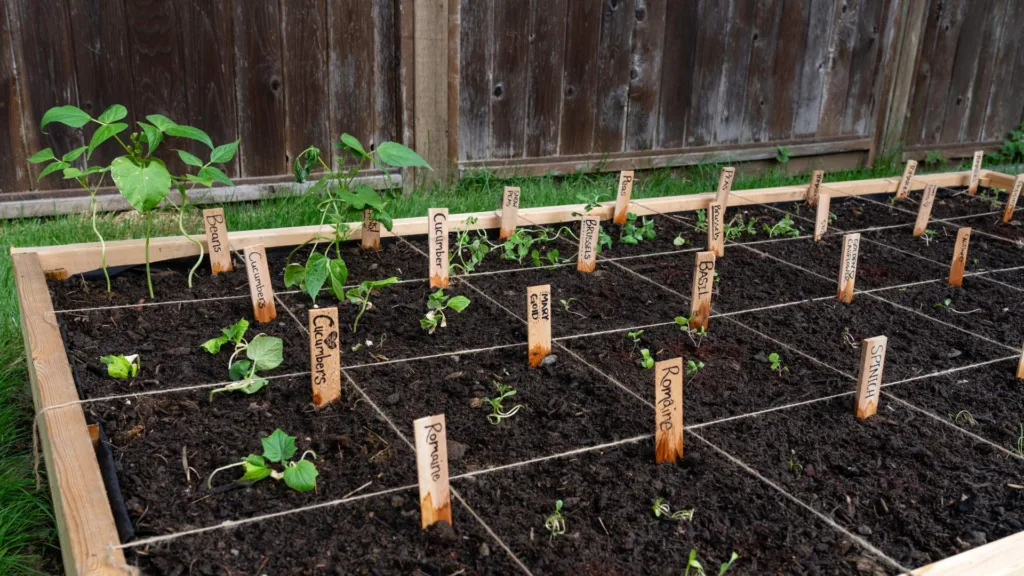Introduction
Planting a square foot garden is an innovative and space-saving gardening method perfect for beginners and experienced gardeners alike. It allows you to maximize your growing area by dividing your garden bed into small, manageable sections, each dedicated to a specific plant or crop. This technique not only optimizes space but also simplifies planting, watering, and harvesting.
In this article, we’ll explore the essentials of planting a square foot garden, including planning your layout, choosing the right plants, and maintaining your garden for optimal growth. Whether you have a small backyard or limited gardening space, this guide will help you grow a thriving garden efficiently and sustainably.
What Is a Square Foot Garden?
Square foot gardening is a method developed by Mel Bartholomew in the 1980s to simplify gardening and increase productivity. It involves dividing a raised bed or garden area into 1-foot by 1-foot squares, each housing a specific number of plants depending on their size.
Benefits of Square Foot Gardening
- Space Efficiency: Grow more in less space by planting densely.
- Reduced Weeding: Dense planting shades the soil, reducing weed growth.
- Water Conservation: Targeted watering reduces waste.
- Easy Maintenance: Manageable sections simplify care and harvesting.
This method is ideal for urban gardeners, beginners, and those looking for a low-maintenance gardening solution.
How to Plan Your Square Foot Garden
Choosing the Location and Bed
Select a sunny spot that receives at least 6-8 hours of sunlight daily. Use a raised bed or a container with well-draining soil to improve root growth and soil quality.
Designing the Grid
- Use a 4×4-foot raised bed divided into 16 squares for a manageable size.
- Construct a grid using strings, wood strips, or markers to define each square foot clearly.
Selecting Plants
Consider the following when choosing plants:
- Plant Size: Use the standard planting density:
- 1 large plant per square (e.g., tomato, pepper)
- 4 medium plants per square (e.g., lettuce, spinach)
-
9 small plants per square (e.g., carrots, radishes)
-
Companion Planting: Combine plants that support each other’s growth and deter pests.
- Seasonal Growth: Plan for successive planting to maximize yield year-round.
Step-by-Step Planting Guide
Preparing the Soil
- Mix equal parts compost, peat moss, and vermiculite for a nutrient-rich, well-draining soil.
- Test soil pH; most vegetables thrive in a pH between 6.0 and 7.0.
Planting Techniques
- Follow the planting density guidelines per square foot.
- Sow seeds at the recommended depth.
- Water gently to avoid displacing seeds.
Watering and Fertilizing
- Water consistently but avoid overwatering.
- Use mulch to retain moisture and regulate soil temperature.
- Apply balanced organic fertilizers every 3-4 weeks to support growth.
Maintaining and Harvesting Your Square Foot Garden
Regular Care
- Monitor for pests and diseases; use organic pest control methods when needed.
- Thin seedlings if overcrowded to ensure healthy development.
- Rotate crops each season to prevent soil depletion.
Harvesting Tips
- Harvest crops at their peak to encourage continued production.
- Use sharp scissors or garden shears to avoid damaging plants.
Real-World Success and Expert Insights
According to the Square Foot Gardening Foundation, gardeners using this method can produce up to 80% more vegetables in the same space compared to traditional row gardening. Expert gardener Mel Bartholomew emphasizes that this method saves time, water, and resources while promoting sustainable practices.
Conclusion
Planting a square foot garden is an effective strategy to grow a high-yield, manageable garden in limited space. By planning your layout carefully, selecting appropriate plants, and maintaining consistent care, you can enjoy fresh, homegrown produce year-round. Embrace this method to transform your gardening experience, conserve resources, and connect more deeply with your food source. Start your square foot garden today and watch your small space bloom abundantly!
